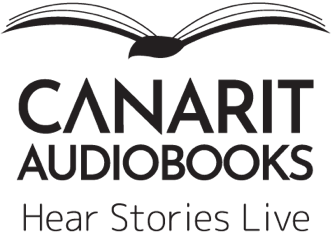
In the realm of storytelling and knowledge, audiobooks have carved out a unique and growing niche. Offering a blend of the ancient tradition of oral storytelling with the modern technology of digital media. The psychology behind the rise of audiobook consumption is as fascinating as the tales they tell. Let’s explore the cognitive allure of audiobooks and how this experience stands apart from the act of reading printed text.
Psychology of Audiobook Listening – The Intimacy of Listening
The act of listening to a story is an intimate and complex neurological journey. When we listen, our brain is not just a passive recipient but an active participant in the narrative process. Neuroscientific research has shown that when we are engaged in listening to narratives, multiple areas of the brain are activated.
Firstly, the primary auditory cortex lights up to process the basic blocks of sound, such as tone and rhythm. Then, the language processing areas, like Broca’s and Wernicke’s areas, get to work decoding the words and sentences. But the experience of listening to a story goes far beyond just processing sounds and language.
As the brain delves into the story’s content, the prefrontal cortex, involved in understanding the narrative and empathy, becomes active. This is where the magic happens: the brain starts to mirror the emotions and intentions of the characters. Studies, such as those published in the journal ‘NeuroImage’, have demonstrated that when we listen to stories they engage our emotions. The brain releases oxytocin, often referred to as the ‘bonding hormone.’ This release can heighten our sense of empathy and connection, not just with the characters but also with the storyteller.
Moreover, the default mode network (DMN) of the brain, which is associated with mind-wandering and creativity, is also engaged when listening to stories. This network is activated when we’re imagining scenarios, reflecting on narratives, and constructing a coherent story in our minds. A study by the University of Southern California showed that when participants listened to a story, their DMN was highly engaged, suggesting that they were deeply immersed in the narrative and possibly creating vivid mental imagery.
The power of a well-narrated audiobook is that it can simulate the feeling of being told a story by another person, which for our ancestors was a communal and emotionally resonant experience. The warmth and familiarity of a human voice can recreate the comforting atmosphere of being read to as a child, a sensation deeply rooted in the human psyche.

Cognitive Engagement
Contrary to the belief that listening is a passive activity, engaging with an audiobook requires active listening and can be just as cognitively demanding as reading. When we listen to audiobooks, we’re not just processing information; we’re interpreting tone, emotion, and nuance in the narrator’s voice, which can lead to a richer understanding of the material.
The Imagination Station
Without the visual cues of text and illustrations, listeners are free to conjure their own images, making the experience of ‘seeing with the mind’s eye’ intensely personal and vivid. This mental visualization can be a powerful tool for memory and recall, as the brain often remembers stories better when it has created the imagery itself.
Accessibility and Inclusivity
Audiobooks can be a boon for those with visual impairments, dyslexia, or other reading difficulties. They provide an alternative means to access literature and learning, ensuring that stories and knowledge are available to all, regardless of reading ability.
Multisensory Learning
While reading is primarily a visual activity, listening to audiobooks can engage different learning styles and preferences. For auditory learners, audiobooks can enhance comprehension and retention of information. They also allow for multitasking, fitting seamlessly into busy lives where sitting down with a book might be a luxury.
The Emotional Resonance
Audiobooks can convey the emotional texture of a story through the narrator’s performance. The subtleties of voice—pace, pitch, and pause—can amplify the emotional impact of the narrative, from the tension of a thriller to the warmth of a romance.
Reading or listening which is better?
The question of “Reading or listening which is better?” is superior is a topic of ongoing debate, often colored by personal preference and the specific context of learning or entertainment. Scientifically, the dichotomy between reading and listening may not be as wide as once thought. A study from the University of California, Berkeley, found that whether a story is consumed through eyes or ears, the same cognitive and emotional parts of the brain are stimulated. It suggests that the narrative, regardless of the mode of input, is what’s crucial for brain engagement.
Reading is a visual and decoding process, engaging the brain’s occipital lobes to translate letters into words and then into ideas. It often requires a quiet environment and can be a solitary activity that allows for deep focus and contemplation. On the other hand, listening to audiobooks activates the auditory pathways and can be integrated into various aspects of daily life, making multitasking more achievable. It also offers a different kind of focus, one that can be more conducive to absorbing complex information for auditory learners.
Moreover, the Yale University School of Public Health conducted a study that suggested that the act of reading could contribute to a longer life, positing that the immersive nature of reading could promote cognitive engagement that preserves the brain’s health. However, this doesn’t diminish the value of audiobooks, which can also provide cognitive and emotional engagement, especially when the listener is fully immersed in the audio experience without distractions.
Ultimately, the choice between reading and listening may come down to personal preference, lifestyle, and the specific objectives of the reader or listener. Both can coexist as valuable and enriching ways to experience stories and information, with neither being inherently better than the other. The key is to engage actively with the content, whether you’re turning a page or pressing play.
Conclusion: Embracing the Spoken Word
In a world where the written word is often hailed as the apex of literary consumption, audiobooks remind us that stories are multifaceted gems, offering different shades of meaning when experienced through different mediums. As we embrace the spoken word, we tap into deep-seated neural pathways, engaging our brains in a symphony of cognitive processes that both echo our ancestral past and reflect our adaptive present.
For those who are intrigued by the immersive world of audiobooks, Canarit Audiobooks extends a personal invitation. Discover the stories that resonate with you, narrated in a way that will touch your heart and stir your imagination. Visit our library and step into a realm where every listen is an adventure waiting to unfold
